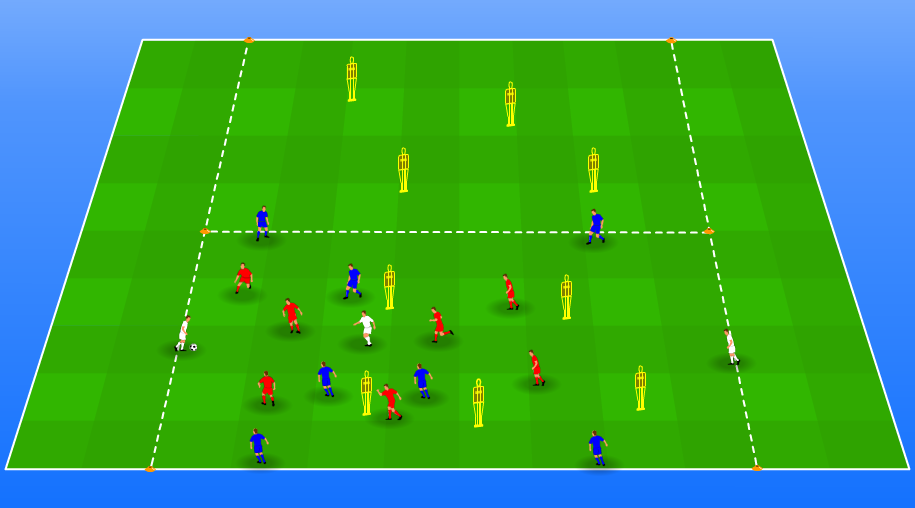Isolated training drills: educational or useless?
When you scan the football pitches on a training night at a random club, you will probably observe some isolated training drills. How educational are exercises when there are no opponents? And how big is the transfer to better football actions in matches?
Isolated training drills
In isolated training drills, there are no opponents involved and players barely have to make any decisions. Examples of those isolated drills are passing and dribbling exercises. The coach tells the players who to pass to or what cone to dribble around.
Those drills have one very big advantage: players make a lot of repetitions. In a short period of time, they touch the ball a lot. In some football matches, especially in 11v11, players can be defending and making off the ball runs for minutes without getting a single touch of the ball.
Game realistic
That doesn’t mean those isolated drills are very educational for players, because every football action consists of three parts.
- A player collects information about a specific situation. For example, a midfielder looks behind him to see how much space he has to receive the ball.
- Based on this information and his game insight, he makes a decision. For example, he decides to turn to his left.
- He executes this decision as good as possible.
In isolated football drills, the second part – making a decision – is already dictated by the coach. A player has to dribble into a certain direction or pass the ball to a certain teammate. Therefore, collecting information is not as important as it would be when the player would make his own decisions.
Isolated exercises focus mostly on the last part: execution. That is where most coaches think the most mistakes are made. In reality, an unsuccessful pass or uncompleted dribble can very well have happened because of the first two steps of that football action.
To improve players in football actions such as making off the ball runs or passing, training drills should therefore contain opponents. Based on the actions of those opponents, players improve their decisions.

Different objective
We spoke about this subject to three coaches, Bas van Baar, Adrie Poldervaart and Byron Bakker. They all clearly stated they prefer drills with opponents, but still they sometimes use isolated exercises because they serve another purpose.
Van Baar states that isolated drills can be useful to show players different possible moves that they wouldn’t think of by themselves. After practicing those feints without opponents, the players should learn to apply those feints in different game realistic situations. Van Baar also suggests that isolated drills can sometimes create a certain energy among players they take with them to position games and tactical games that follow.
Bakker uses isolated drills approximately twenty percent of the time, such as in between two tactical games. For example, he uses a juggling competition as a form of active recovery. Not to improve the football actions they need in the game, but to keep the level of concentration high.
Poldervaart only uses isolated passing drills as an extended warming-up. Sometimes, small adjustments make them a little bit more game realistic. For example, the players can make their own decisions within the passing drill. He also uses large trash cans to simulate the position of an opponent, because at his club, there aren’t any mannequins available.
